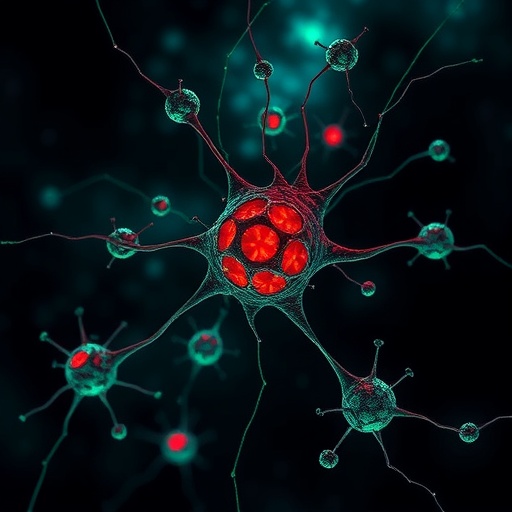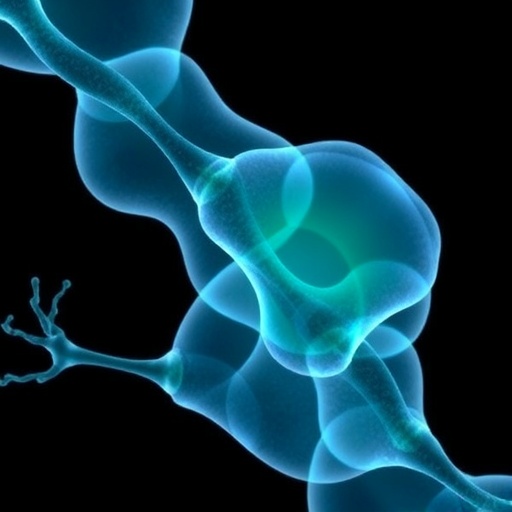In a groundbreaking study published recently, researchers have unveiled a novel mechanism that distinctly separates chronic inflammation from its acute counterpart—a discovery that could revolutionize therapeutic approaches for a broad spectrum of chronic diseases. Acute inflammation plays a crucial protective role in the body’s defense against infections, triggering rapid immune responses that are typically short-lived and resolve once the threat is cleared. However, when inflammation persists without infection, it can transition into a chronic state that fuels the development and progression of numerous debilitating conditions, including arthritis, cancer, autoimmune disorders, metabolic-dysfunction-associated steatohepatitis (MASH), and various age-related pathologies. Despite its prominence in disease pathology, the molecular underpinnings distinguishing chronic inflammation from acute inflammation have remained elusive until now.
The study highlights the role of chromatin remodeling—a fundamental process by which the structure of chromatin is dynamically altered to regulate gene expression—in modulating inflammatory responses. Chromatin remodeling ensures that inflammatory genes are either accessible or repressed depending on cellular context. However, the research team discovered that during chronic inflammation, an additional layer of regulatory control emerges: nuclear autophagy. This process, distinct from canonical cytoplasmic autophagy, involves selective degradation of nuclear components and has been linked to the modulation of inflammatory gene expression.
Central to this mechanism is the protein WSTF (Williams Syndrome Transcription Factor), a component of the ISWI chromatin-remodeling complex. Under conditions of chronic inflammation, WSTF interacts specifically with members of the ATG8 family of autophagy proteins within the nucleus. This interaction instigates the export of WSTF from the nucleus to the cytoplasm, where it is subsequently degraded by autophagosomes and lysosomes—key players in cellular recycling and degradation pathways. Loss of nuclear WSTF leads to a more open chromatin configuration around inflammatory genes, effectively amplifying the inflammatory response over time.
.adsslot_mhRTyqznk3{width:728px !important;height:90px !important;}
@media(max-width:1199px){ .adsslot_mhRTyqznk3{width:468px !important;height:60px !important;}
}
@media(max-width:767px){ .adsslot_mhRTyqznk3{width:320px !important;height:50px !important;}
}
ADVERTISEMENT
The research adds a new dimension to our understanding of nuclear autophagy and its selective role in chronic, but not acute, inflammation. By probing the molecular players involved, the study reveals a previously unrecognized crosstalk between chromatin remodeling and autophagy pathways. This selective crosstalk holds therapeutic promise: disrupting the interaction between WSTF and ATG8 can suppress chronic inflammation without impairing the body’s immediate defense mechanisms that are required during acute inflammatory episodes.
To capitalize on this insight, the investigators designed cell-penetrating peptides capable of specifically blocking the WSTF–ATG8 interaction. Remarkably, these peptides showed no effect on acute inflammation, preserving essential immune responses that protect against infection and injury. Yet, they effectively reduced chronic inflammatory markers in cellular models of senescence, as well as in mouse models simulating MASH and osteoarthritis—two conditions notoriously difficult to treat due to entrenched chronic inflammation. Additionally, analyses of patient tissue samples echoed these findings, underscoring the translational potential of targeting this nuclear autophagy pathway.
This discovery could herald a paradigm shift in the treatment of chronic inflammatory diseases, which currently rely heavily on broadly immunosuppressive agents. Such treatments, while sometimes effective, often blunt the immune system indiscriminately and leave patients vulnerable to infections and other complications. By providing a means to selectively dampen chronic inflammation—while sparing acute inflammation—a more precise, targeted therapeutic strategy becomes attainable. This approach could minimize adverse effects and improve long-term outcomes for millions of patients worldwide suffering from chronic inflammatory conditions.
The study also poses compelling questions about the broader role of nuclear autophagy beyond inflammation. Given the conserved nature of autophagic pathways and chromatin regulators across cell types, the WSTF–ATG8 axis might participate in other nuclear quality control or gene regulatory mechanisms. Exploring these avenues could unveil further complexities of nuclear homeostasis and its impact on disease.
Beyond its diagnostic and therapeutic implications, the work underscores the importance of spatial regulation of protein degradation within the cell. The selective shuttling of WSTF from the nucleus to cytoplasm for degradation highlights how cells compartmentalize and fine-tune molecular processes depending on physiological context. This nuanced regulation ensures that beneficial acute inflammation proceeds unhampered, while chronic inflammation, which drives pathology, is kept in check by modulating chromatin accessibility through nuclear autophagy.
As chronic inflammation is implicated in a growing number of health conditions exacerbated by aging and lifestyle factors, new interventions targeting pathways uncovered by this research could have widespread public health impact. The identification of cell-penetrating peptides that inhibit the WSTF–ATG8 interaction opens the door not only for drug development but also for biomarker discovery that could help stratify patients who would benefit most from such treatments.
While preliminary, the success of these peptides in preclinical models signals a promising trajectory toward clinical application. Future studies will need to assess their safety, specificity, and efficacy in human trials. Additionally, understanding whether similar nuclear autophagy mechanisms exist in other chronic inflammatory diseases might broaden the scope of therapies derived from this discovery.
Overall, this study enriches the scientific narrative by bridging the gap between chromatin biology, autophagy, and immunology, providing a mechanistic explanation for the lingering challenge that has long puzzled researchers: why chronic inflammation behaves so differently from acute inflammation at the molecular level. In doing so, it sets the stage for innovative, targeted treatments that could profoundly influence how we tackle chronic inflammatory diseases in the years to come.
Subject of Research: Molecular mechanisms differentiating chronic and acute inflammation, focusing on nuclear autophagy and chromatin remodeling.
Article Title: WSTF nuclear autophagy regulates chronic but not acute inflammation.
Article References:
Wang, Y., Eapen, V.V., Liang, Y. et al. WSTF nuclear autophagy regulates chronic but not acute inflammation. Nature (2025). https://doi.org/10.1038/s41586-025-09234-1
Image Credits: AI Generated
Tags: acute vs chronic inflammation differencesage-related inflammatory pathologiesautoimmune disorders and inflammationchromatin remodeling in immune responsechronic inflammation mechanismsgroundbreaking research in chronic inflammationinflammatory gene expression regulationmetabolic dysfunction and chronic inflammationmolecular underpinnings of inflammationnuclear autophagy in inflammationrole of nuclear components in inflammationtherapeutic approaches for chronic diseases





